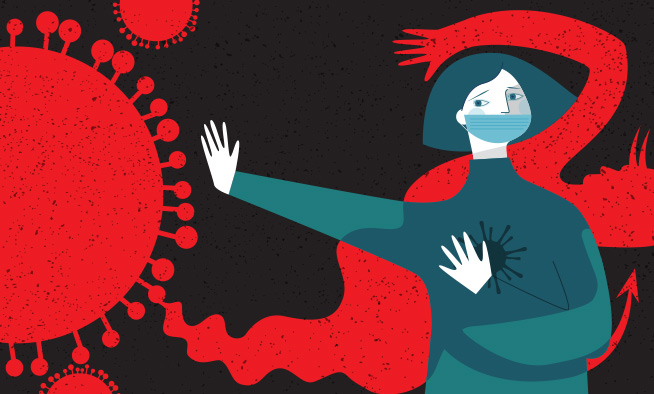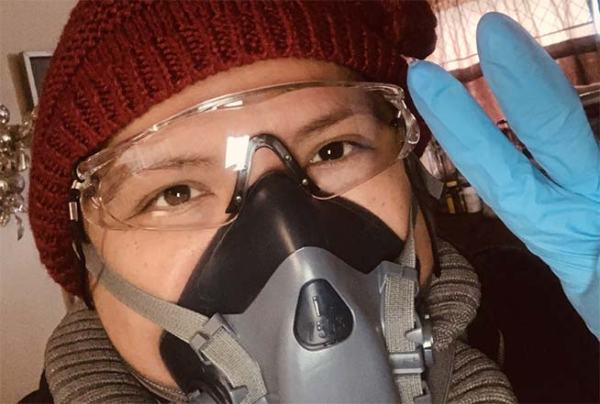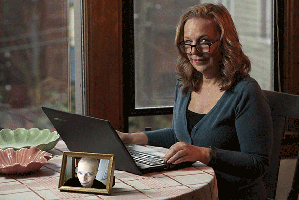 So I had quite the party last night. There was music, there was wine and there was me, curled up on the couch with a heating pad, an old timey quilt and an ever-diminishing box of chocolate cookies. Yes, as you’ve probably guessed, I was the guest of honor at a good old-fashioned pity party last night, brought to you (or me, rather) by Living with Cancer and My Bad Attitude Productions.
So I had quite the party last night. There was music, there was wine and there was me, curled up on the couch with a heating pad, an old timey quilt and an ever-diminishing box of chocolate cookies. Yes, as you’ve probably guessed, I was the guest of honor at a good old-fashioned pity party last night, brought to you (or me, rather) by Living with Cancer and My Bad Attitude Productions.
I’m still not sure what exactly happened or why it decided to happen on what must have been the most gorgeously vibrant spring day in Seattle history. I woke feeling a little under the weather, with fever, chills and a bit of a sore throat and for some reason couldn’t convince myself that going out for a run would be the thing to lift my spirits and clear my head. Instead, I pointedly ignored my running shoes (and the running laptop) and started watching Sex and the City (the movie), which didn’t exactly help my mood. (How could Big do that to Carrie? Why is Carrie reacting like such a dork? And what the hell is with that bird on her head?)
Before I knew it, morning had blended into early afternoon, which then coasted slowly towards late afternoon. And I still hadn’t left the house. I’m not even sure I ate anything, although I did take my medication: the anti-anxiety pill, the tamoxifen, the two tabs of Vitamin D and one tab of Vitamin B12, all chased down by a fish oil tab the size of my little finger. I take all of this crap every day (and more on days when I have bad chest pain or a migraine or can’t sleep), although the only pill that really counts is the tamoxifen, which acts like a hawk-eyed chaperone at a seventh grade dance, perpetually shouldering its way between those two old lovebirds — estrogen and cancer — so they can’t hook up and produce a slew of baby tumors.
And that, I believe, is what was … or is … at the heart of my funk (truth be told, I haven’t quite kicked it yet).
Not that I have any reason to be in a funk. Last Wednesday, I had a stellar one-year follow-up with my breast cancer surgeon, who told me that my left side had healed so well she couldn’t even tell that I’d had radiation there. Plus I’m working as much as I was pre-diagnosis; I just got back from a trip to Arizona and Texas; and spring has finally sprung in Seattle, chasing the constant drizzle and gray away with glorious sunshine and days that stretch on forever (or at least until 8 p.m.).
And yet yesterday (and even Wednesday while talking to my doc), all I could think about was the dreaded R-word: recurrence.
Obviously, with no more “mamm” to gram, that particular method of breast cancer screening is off the table. And in the year since my surgery, I haven’t received an ultrasound or MRI to see if any new tumors have sprouted in my chest. I also haven’t received any assurances or guarantees that I’m completely out the woods and that I’ll never again have to climb onto the bad carnival ride that is cancer treatment. Instead, I’ve been living in Limbo Land, where ever ache and pain is ripe for a new kind of dark, desperate scrutiny.
My BC surgeon said that a physical examination — which she performed while we chatted about reconstruction, swing dancing and whether or not I could take up boxing — was the best way to determine if I was developing anything hinky in my chest. But what about all the other areas of my body? My liver, my lungs, my bones, my brain — all those places where breast cancer likes to pop up and wreak havoc like a bitter, inebriated ex-boyfriend at your first major book launch.
That’s where things get a little muzzy. According to my oncologist — who’s gone over my recurrence rates with me on more than one occasion — I need to tell her if I start “feeling bad” or suddenly develop a weird persistent pain. Or, I imagine, I end up with a broken rib after getting a hug or a have a seizure while grocery shopping.
Do fever and chills and a sore throat fit within the “feeling bad” category, I wondered yesterday, watching bright sunshine blur into gray dusk. (Or was the fever not a symptom of a cold at all, but one of those infamous hot flashes I was told I’d get as tamoxifen hip-checks me into menopause?) And while we’re on the topic of hinky things developing, what about that sore spot under what used to be my left breast. Was that a tumor starting to sprout or had I knocked myself with the vacuum cleaner handle yet again?
Oh the places you go when you’ve had cancer.
And the things you say. Friday night over drinks with a girlfriend, I casually mentioned that I knew I wasn’t going to live all that long.
“Once you have cancer, you tend to get it again,” I told her, sipping my martini and grazing on a goat cheese, mint and bacon-sprinkled bruschetta. (Might as well live it up, since I’m going to die in ten minutes, ten days, ten years or whatever, right?)
“I’m feeling really blue,” I texted another buddy last night while cancelling plans. “I don’t want to die young and I know I’m going to now.”
Who does that? Who dumps that kind of crap into the laps of their friends? Certainly not me, unless I’m in the throes of a deep emotional funk. Which may or may not be something I should report to my oncologist (Hmmm … I’m normally so upbeat. Perhaps my foul mood is symptomatic of a brain tumor?).
 It’s probably just the cold (or allergies) taking me to this dark place. Or the spate of friends and former neighbors who’ve recently lost (or are in the process of losing) a parent, grandparent, spouse or beloved pet. Maybe it’s the one-year anniversary of my double mastectomy, which looms on the horizon like a tax deadline. Or hey, maybe it’s the frigging tax deadline itself.
It’s probably just the cold (or allergies) taking me to this dark place. Or the spate of friends and former neighbors who’ve recently lost (or are in the process of losing) a parent, grandparent, spouse or beloved pet. Maybe it’s the one-year anniversary of my double mastectomy, which looms on the horizon like a tax deadline. Or hey, maybe it’s the frigging tax deadline itself.
Whatever the case, I’m blue because I hate not knowing what the hell is going on with my body and knowing that I’ll never really know as long as I live, which I hope will be a long, long time, but chances are it won’t because of this crappy disease. I’m blue because I’m a bit of a control freak and cancer is not something you can control. Or predict. Or prevent, no matter how much sauteed kale you consume (and trust me, I’m consuming a lot these days). I’m blue because recurrence happens; it’s happened to friends and family members and to some of my cancer buddies on Twitter and while some of these people have been able to stay on top of the disease, it’s not always possible to kick cancer to the curb once it starts “traveling from organ to organ like a gypsy caravan,” in the words of the late, great Dave Hodgson.
I’m blue because it’s gorgeous out and I should be out there celebrating the sun and the spring weather and the life I have while I have it, but instead I’m moping around the apartment “giving in to myself,” as my mother used to say. I’m blue because I’m usually the one trying to cheer other people up when they confess these kinds of dark thoughts and for some reason, I’m not quite able to do that for myself.
I’m blue because I’m angry and scared and don’t feel well and because I have to pay a bunch of money in taxes and I gained like four pounds while visiting my sister in Texas. I’m blue because I don’t have a Mr. Big or a body (or budget) like Sarah Jessica Parker and because despite having cancer, I’m just as shallow and self-absorbed as I ever was.
Oddly enough, though, now that I’ve gotten all this crap off my chest, I actually feel a little better. Thanks for the ear, folks and for stopping by my little pity party, which as of this moment, is officially closing down. Time to go run in the sun. Time to stop whining and live.














